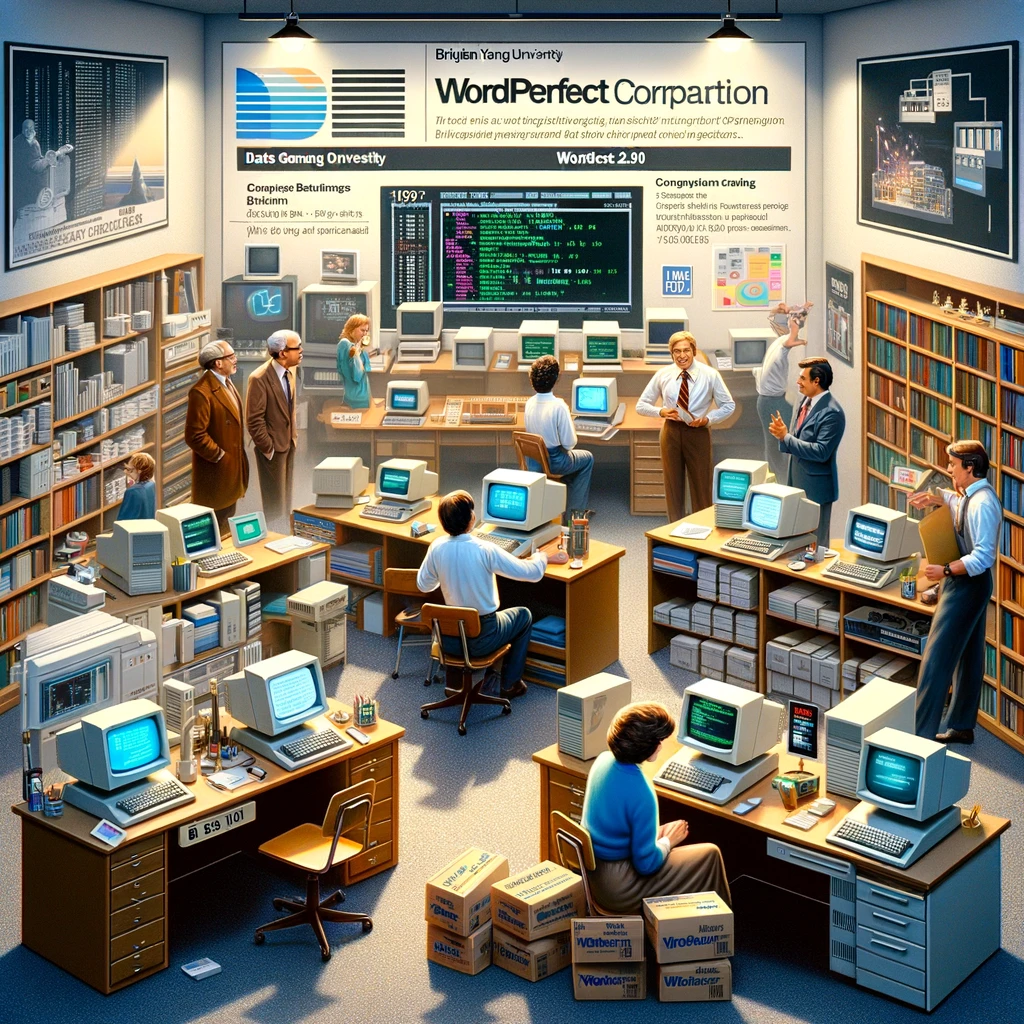Reading time: 11 minutes.

Why Project Management Matters in Software Development
When it comes to software development, having solid project management is like having a GPS for your road trip. It keeps you on track, helps you avoid potholes, and makes sure you reach your destination on time. Let’s break down why project management is your best buddy in this journey.
Keeping Your Goals in Sight
Project management is like the glue that holds your project together. It makes sure your work aligns with what the business wants to achieve. Think of it as setting your GPS coordinates before you start driving. You define where you’re going, who needs to be involved, and what you need to get there. This way, everyone knows the plan and can work towards the same goal (Smartsheet).
A good project manager is like a seasoned driver who knows the route. They guide the team, make tough calls, and manage resources wisely. Their leadership keeps everyone motivated and working together. With a project manager steering the wheel, the team can hit milestones and dodge any roadblocks that come up.
Following the Roadmap: SDLC
The Software Development Lifecycle (SDLC) is your project’s roadmap. It includes steps like gathering requirements, designing, coding, testing, deploying, and maintaining the software. Sticking to this roadmap ensures your project is organized and delivers top-notch results.
Project managers are the navigators who make sure everyone follows the SDLC. They keep the lines of communication open between stakeholders, users, and developers, making sure everyone is on the same page. By setting clear milestones and deliverables, project managers keep the project moving forward and manage everyone’s expectations.
They also work closely with tech leads and developers to allocate resources, estimate timelines, and monitor progress. Their knack for detail and organization helps keep track of everything, from documentation to issue tracking, ensuring smooth sailing throughout the project (Smartsheet).
By embracing project management, you can make your software development projects more efficient and effective. It keeps your goals aligned, provides strong leadership, and ensures you stick to the SDLC. This helps you manage complexity, reduce risks, and foster a collaborative team environment. For more tips on project management for developer teams, check out our article on project management best practices for developer teams.
Effective Communication in Project Management
Nailing communication is the secret sauce for rocking project management, especially in software development. Let’s dive into two key areas: building relationships and collaboration, and the game-changing impact of new tech.
Building Relationships and Collaboration
According to Smartsheet, project managers spend almost 90% of their time chatting with team members and stakeholders. This shows just how crucial good communication is for building strong bonds and teamwork.
When team members get along, trust and unity follow. Open and honest communication helps with sharing knowledge, solving problems, and sorting out conflicts. Regular check-ins, status updates, and casual chats keep everyone on the same page and moving toward the same goal.
Collaboration is another biggie. When team members work together, creativity and innovation thrive. By encouraging open discussions and feedback, project managers can tap into the diverse skills and expertise within the team, driving successful software development projects.
Impact of Emerging Technologies
Software development is always changing, and new tech is shaking up how projects are managed. Tools like artificial intelligence (AI), natural language processing (NLP), and machine learning are changing the game.
These technologies can bring in smart tools that automate some project management tasks, streamline processes, and boost communication in remote teams. For example, AI chatbots can handle common questions, provide real-time updates, and help team members and stakeholders stay in touch. NLP algorithms can analyze heaps of project data, pull out insights, and create reports.
By embracing new tech, project managers can make communication more efficient, cut down on manual work, and improve decision-making. But it’s important to balance using tech and keeping human connections strong within the team.
Project management software is also a big help. These tools offer a central hub for project overviews, streamlined processes, efficient workflows, and smooth communication and collaboration. With project management software, teams can stay organized, track progress, and make sure everyone is working toward the same goals.
In short, good communication is key in project management for software development teams. Building relationships and encouraging collaboration are essential for success. Plus, staying on top of new tech and using project management software can greatly improve communication and project outcomes. For more tips on project management best practices for developer teams, check out our article on project management best practices for developer teams.
Project Management Methods
In software development, nailing down the right project management approach is key to getting your projects over the finish line. These methods give structure, guidance, and flexibility to the process, making sure everything’s done on time, within budget, and to everyone’s satisfaction. Two big players in this game are traditional and agile methods.
Traditional vs. Agile Methods
Traditional project management, often called Waterfall, is like a straight line. You start with gathering requirements, then move to design, development, testing, and finally deployment. Each step has to be finished before you move on to the next, and once a step is done, there’s no going back.
While this method has been around for ages, it’s not always the best fit for software development. It doesn’t handle changes well and can be a bit rigid. That’s why new methods have popped up to better fit the needs of software teams (Teamwork.com).
Agile project management, with methods like Scrum and Kanban, is all about teamwork, speed, and adapting on the fly. It breaks projects into smaller tasks, making it easier to adjust as you go. This flexibility helps developers respond quickly to changes and keep things moving smoothly.
Kanban and Rapid Application Development (RAD)
Kanban started in manufacturing but has found a home in software development. It uses a visual board with columns like backlog, in progress, and done. This setup makes it easy to see where everything stands, spot any hold-ups, and keep things flowing. By limiting how much work is in progress, Kanban helps teams avoid taking on too much at once, keeping things manageable and efficient (Teamwork.com).
Rapid Application Development (RAD) is all about speed. It uses quick prototypes and iterations to gather feedback fast. By getting input from stakeholders and end-users early on, RAD reduces the risk of going off track. Its iterative nature means you can keep improving and adapting as you go (Teamwork.com).
Picking the right project management method for your software projects is crucial. Each has its own perks and challenges. You need to look at what your project needs and what your team can handle to choose the best fit. The right method can boost efficiency, teamwork, and the successful delivery of top-notch software. For more on how project management impacts developer teams, check out our article on agile project management in developer teams.
Quality Assurance in Project Management
Quality assurance (QA) is the unsung hero of software development. It’s all about catching mistakes before they become costly problems, keeping risks low, and making sure everything runs smoothly from the get-go. By weaving QA into your project from day one, you can boost efficiency, build a solid reputation, and save a ton of money on fixes down the line (Wrike).
Why QA Matters
QA isn’t just a box to tick; it’s the backbone of delivering top-notch software. Here’s why it’s a game-changer:
- Spotting Mistakes Early: QA helps catch errors early, so they don’t sneak up on you later.
- Cutting Down Risks: Regular testing and checks keep potential problems at bay.
- Setting Quality Goals: From the start, QA sets the bar for what “good” looks like.
- Boosting Efficiency: Streamlined workflows and better teamwork mean more gets done, faster.
- Accountability: QA keeps everyone on their toes, pushing for continuous improvement.
- Building Trust: High-quality software earns customer trust and loyalty.
- Saving Money: Fixing issues early is way cheaper than dealing with them after launch.
QA vs. QC: What’s the Difference?
QA and QC might sound like the same thing, but they’re not. Here’s the lowdown:
Quality Assurance (QA): Think of QA as the game plan. It’s all about setting up processes to prevent defects and keep standards high. It’s proactive, focusing on planning, executing, and monitoring to make sure everything stays on track.
Quality Control (QC): QC is the referee. It’s about inspecting and testing the product to catch any slip-ups. It’s reactive, stepping in to fix issues and ensure the final product meets the set standards.
In short, QA is about preventing problems, while QC is about fixing them. Both are crucial for delivering software that’s not just good, but great.
Real-World QA
Imagine you’re working on a new app. Without QA, you might miss a bug that crashes the app every time someone tries to log in. With QA, that bug gets caught and fixed long before the app hits the market, saving you from a flood of angry users and bad reviews.
Or think about a time when a project went off the rails because of poor planning. QA helps set clear goals and standards from the start, keeping everyone aligned and on track.
Wrapping Up
QA isn’t just a nice-to-have; it’s a must-have. It keeps your project on track, your team accountable, and your customers happy. By understanding the difference between QA and QC and making QA a priority, you’re setting yourself up for success. So, next time you’re kicking off a project, remember: a little QA goes a long way.
Project Management Best Practices
Nailing software development projects isn’t just about coding—it’s about smart project management. Let’s break down two key aspects: what makes a project successful and how project management software can be your best friend.
Key Success Factors
Getting a software project over the finish line takes more than luck. Here are some must-haves:
Clear Goals: Everyone needs to know what they’re aiming for. Clear, achievable objectives keep the team focused and aligned.
Good Communication: Talking is key. Regular check-ins, updates, and using the right tools can make sure everyone’s on the same page and problems get solved fast.
Risk Management: Spotting potential problems early and having a plan to deal with them can save a lot of headaches later. Think of it as project insurance.
Flexibility: Things change—requirements, timelines, you name it. Agile methods like Scrum help teams adapt quickly and keep moving forward.
Focus on these, and you’ll see your team working more efficiently and hitting those project goals.
Role of Project Management Software
In today’s tech-savvy world, project management software is a game-changer. Here’s how it helps:
Plan and Track: These tools let you map out the project, assign tasks, and keep an eye on progress. Deadlines and dependencies are easier to manage, so nothing falls through the cracks.
Boost Communication: Built-in chat, shared boards, and real-time comments make teamwork smoother. Everyone knows what’s happening and can pitch in when needed.
Centralize Info: Keep all your project docs, files, and discussions in one place. No more hunting for that one email or document—everything’s right there.
Increase Efficiency: Automation features cut down on busywork. Set up recurring tasks, automate notifications, and keep the team focused on what matters.
Using project management software can make your team more collaborative, organized, and productive.
By sticking to these best practices and leveraging the right tools, software development teams can plan, execute, and deliver top-notch projects. Follow these tips, and you’ll be better equipped to handle the twists and turns of software development, leading to successful outcomes.
Case Studies in Project Management
Real-life stories show just how crucial project management is in software development. These case studies spotlight smart strategies, cool tech, and keeping everyone in the loop, all leading to project success.
Real-Life Examples
Here are some standout stories where project management made all the difference:
Sydney Opera House: Building this iconic structure was no walk in the park. They faced budget blowouts and tricky designs. But with solid project management, like working closely with stakeholders and handling crises, they turned it into a world-class wonder.
Airbus A380: Creating the world’s biggest passenger plane was a global effort with lots of engineering hurdles. Using Agile project management helped keep the production process smooth, on time, and up to high standards.
London 2012 Olympics: Pulling off the London Olympics needed careful planning, risk management, and coordination with many different groups. Thanks to sharp project management, the event was a hit and left a lasting legacy.
These stories show how project management can tackle budget issues, design flops, delays, and safety worries, leading to successful projects. For more detailed examples, check out our article on project management case studies with examples.
Lessons Learned and Success Stories
These case studies are gold mines for project managers and organizations. They teach us about ethical leadership, social responsibility, and using new techniques and tech.
Key takeaways include the importance of managing stakeholders well, being proactive about risks, and sticking to ethical practices. They also show how social responsibility and sustainable practices can make a big difference in project management.
By studying these real-life examples, project managers can pick up on successful strategies, innovative approaches, and the need to keep up with trends. This knowledge helps them improve their skills and boost their software development projects.
As project management evolves, embracing new tech, agile methods, and sustainable practices is crucial. Staying updated with the latest trends and innovations helps project managers handle the challenges of software development projects effectively.
For more on best practices tailored for developer teams, check out our article on project management best practices for developer teams.





